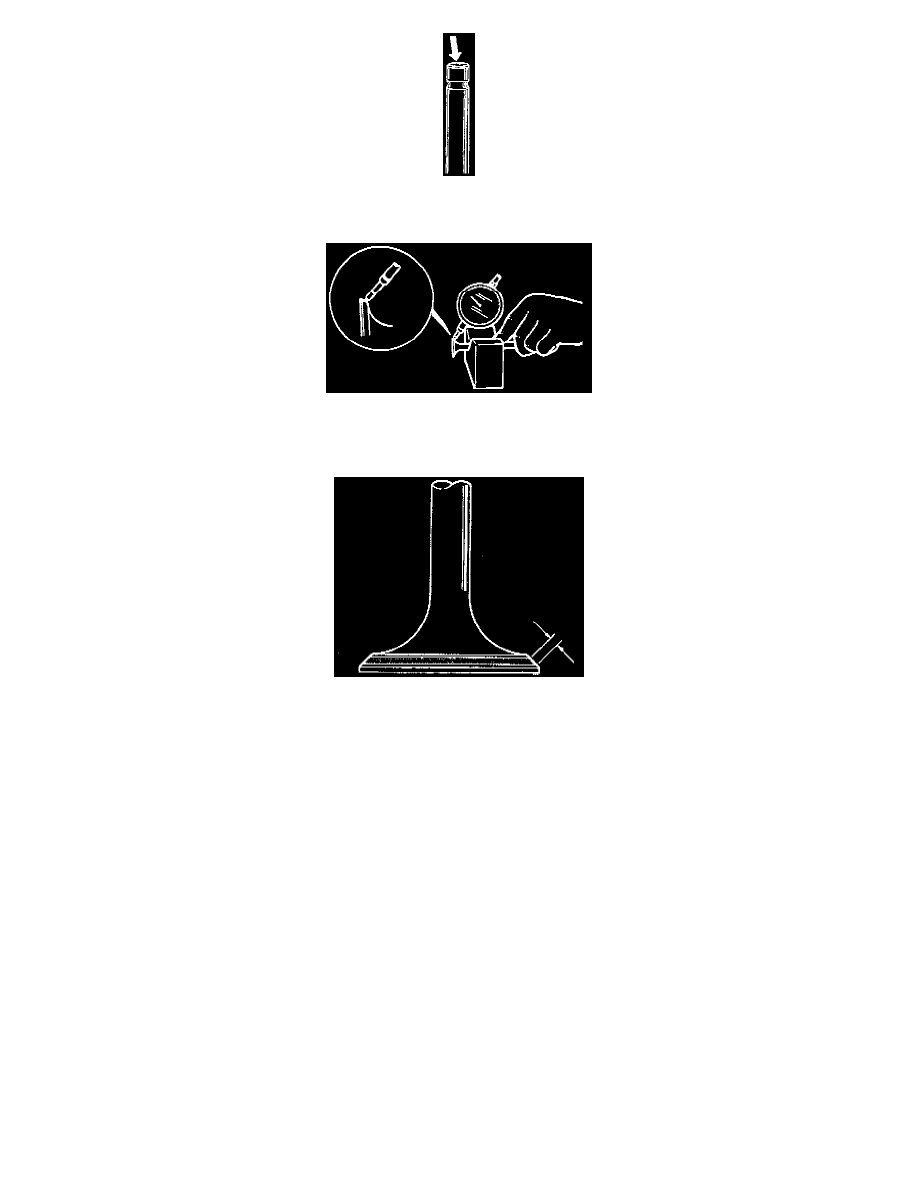Sidekick JSS 4D Hard Top 2WD L4-1.8L (1997)

-
Inspect valve stem end face for pitting and wear. If pitting or wear is found there, valve stem end may be resurfaced, but not too much to grind off
its chamber. When it is worn out too much that its chamber is gone, replace valve.
-
Check each valve for radial runout with a dial gauge and "V" block. To check runout, rotate valve slowly. If runout exceeds its limit, replace
valve.
Limit On Valve Head Radial Runout: 0.08 mm (0.003 inch).
-
Seating contact width: Create contact pattern one each valve in the usual manner, i.e., by giving uniform coat of marking compound to valve seat
and by rotatingly tapping seat with valve head. Valve lapper (tool used in valve lapping) must be used. Pattern produced on seating face of valve
must be a continuous ring without any break, and the width of pattern must be within specified range.
Standard Seating Width Revealed By Contact Pattern On Valve Face:
Intake and Exhaust: 1.1-1.3 mm (0.0433 - 0.0512 inch)
-
Valve seat repair. A valve seat not producing a uniform contact with its valve or showing width of seating contact that is out of specified range
must be repaired by regrinding or by cutting and regrinding and finished by lapping.
